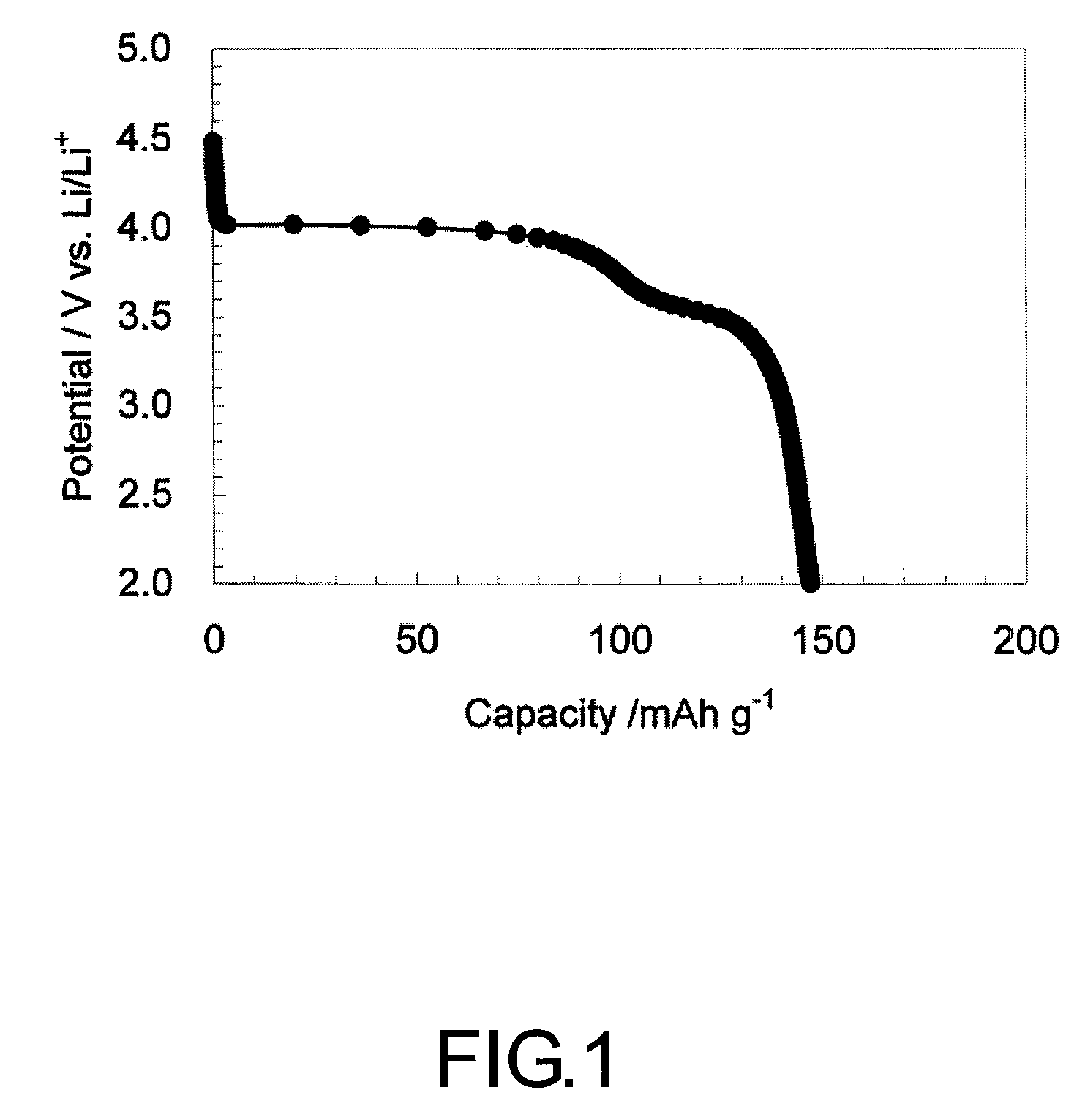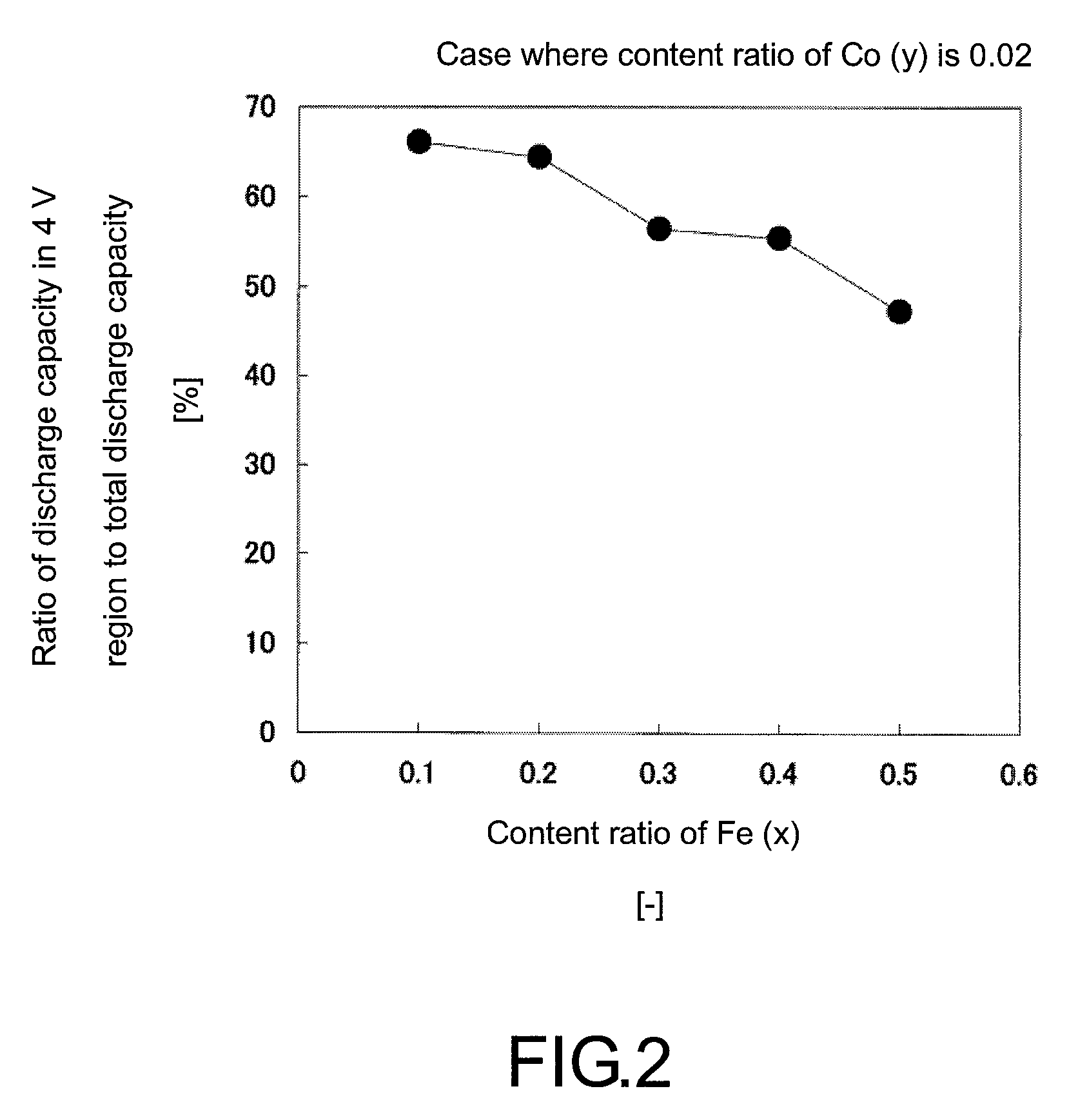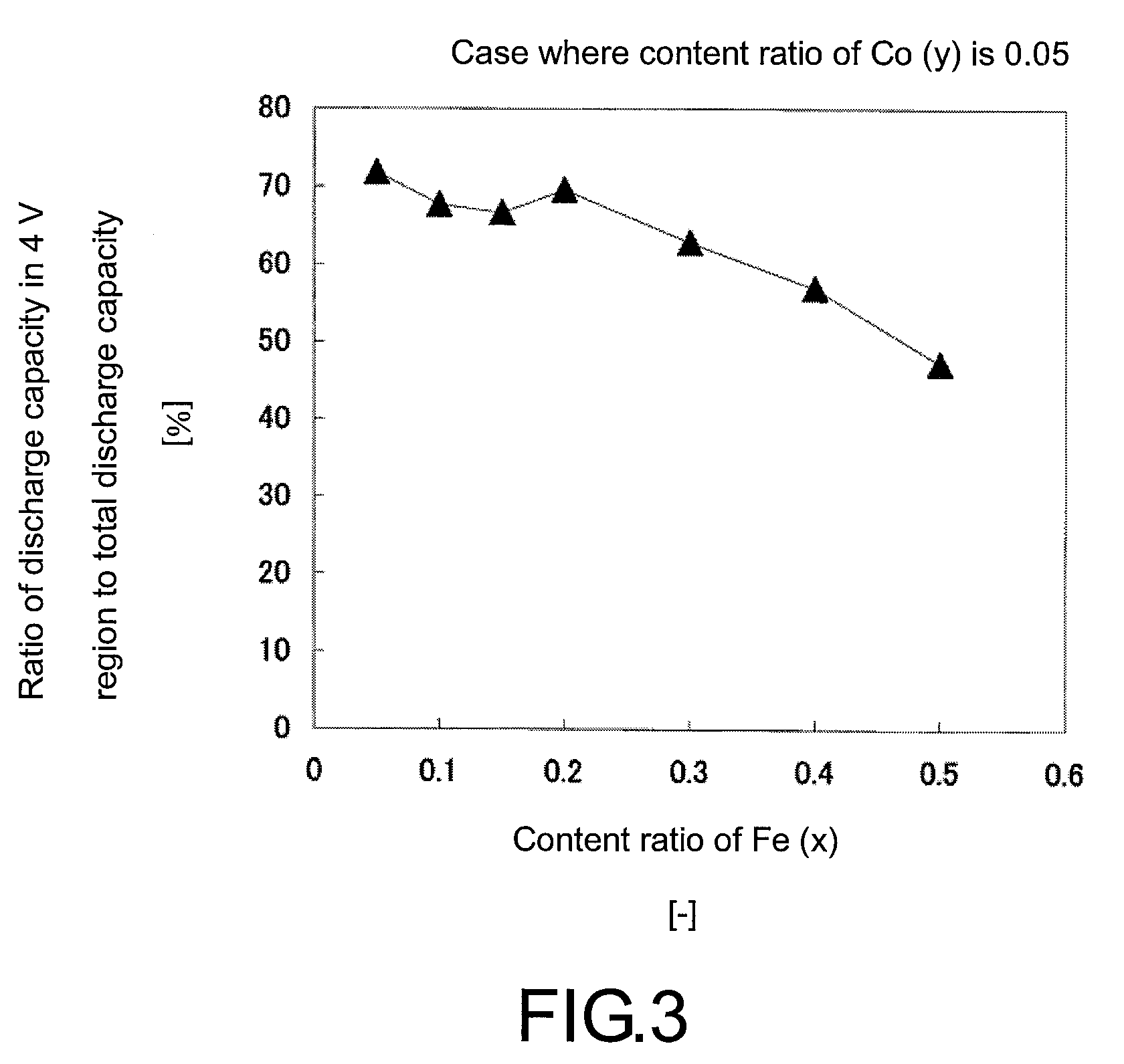Positive active material for lithium secondary battery, and lithium secondary battery
a lithium-containing secondary battery and active material technology, applied in the direction of manganates/permanentates, cell components, transportation and packaging, etc., can solve the problems of insufficient thermal stability of a lithium-containing transition metal oxide, insufficient countermeasures, and insufficient battery safety
- Summary
- Abstract
- Description
- Claims
- Application Information
AI Technical Summary
Benefits of technology
Problems solved by technology
Method used
Image
Examples
example 1
[0061]After LiOH.H2O and (NH4)2HPO4 were Separately Dissolved in Ion exchanged water, the obtained both solutions were mixed while being stirred. Next, MnSO4.5H2O, FeSO4.7H2O, and CoSO4.7H2O were dissolved in water in which ascorbic acid was dissolved. Herein, the amount of the ascorbic acid to MnSO4 was adjusted to 0.1 by mole ratio. Next, this solution was added to the mixed solution of LiOH.H2O and (NH4)2HPO4 to obtain a precursor solution. The precursor solution was prepared so as to give the ratio of Li:P:Mn:Fe:Co in the precursor solution of 2:1:0.79:0.2:0.01. After the obtained solution was transferred to a container made of polytetrafluoroethylene, the container was set in a reaction container and after the container was sufficiently purged with nitrogen gas and tightly closed and under stirring condition at 100 rpm, hydrothermal synthesis was carried out at 170° C. for 15 hours. After the reaction, a resulting precipitate obtained by filtration was sufficiently washed with ...
example 2
[0062]A positive active material of Example 2 was obtained in the same manner as in Example 1, except that the amounts of MnSO4.5H2O, FeSO4.7H2O, and CoSO4. 7H2O were adjusted so as to give the ratio of Li:P:Mn:Fe:Co in the precursor solution of 2:1:0.78:0.2:0.02.
example 3
[0063]A positive active material of Example 3 was obtained in the same manner as in Example 1, except that the amounts of MnSO4.5H2O, FeSO4.7H2O, and CoSO4.7H2O were adjusted so as to give the ratio of Li:P:Mn:Fe:Co in the precursor solution of 2:1:0.75:0.2:0.05.
PUM
| Property | Measurement | Unit |
|---|---|---|
| charge-discharge performance | aaaaa | aaaaa |
| positive electrode potential | aaaaa | aaaaa |
| positive electrode potential | aaaaa | aaaaa |
Abstract
Description
Claims
Application Information
 Login to View More
Login to View More - R&D
- Intellectual Property
- Life Sciences
- Materials
- Tech Scout
- Unparalleled Data Quality
- Higher Quality Content
- 60% Fewer Hallucinations
Browse by: Latest US Patents, China's latest patents, Technical Efficacy Thesaurus, Application Domain, Technology Topic, Popular Technical Reports.
© 2025 PatSnap. All rights reserved.Legal|Privacy policy|Modern Slavery Act Transparency Statement|Sitemap|About US| Contact US: help@patsnap.com



